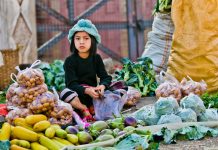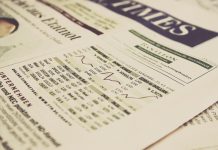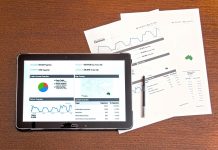
Economic recovery depends on the level of consumer fear, according to economists as the services sector leads the recession the US is experiencing.
They believe that individual psychology, consumer confidence, and the success of government in filling the income gap for unemployed individuals all play a role in reviving the economy.
Consumers’ discretionary spending for industries like dining, travel, and entertainment will determine how these parts of the economy will carry on.
Consumers stopped spending and saved more than 13.1% of their income, the most in 45 years, when they were forced to stay inside their homes.
How consumers would spend the saved cash for a recovery depends on their confidence in the economy and their jobs.
Dow Jones reported that the US lost 22 million jobs in April. The unemployment rate could go beyond 16%, the highest since 1939.
Driven by fear
The end of this recession depends on how consumers react to the economy.
“It’s much more behavioral. It’s driven by fear,” said Diane Swonk, chief economist at Grant Thornton. Economists use China as a basis for their analysis, since the disease began there.
“Even a month after they reopened in Wuhan, people are still worried about going to public places and malls.”
When Georgia reopened businesses late last month, consumers reacted with hesitancy. “There’s a fear about reopenings and visiting places,” she said. “The malls opened to a lot of fanfare, advertised like crazy, but few people showed up.”
Gradual reopening
However, reopening measures vary by states, regions, and cities.
“The U.S. is in this weird position, where we’ve done worse than other major countries in taming Covid and bending the curve, except for New York, and we’ve opened before the others have which means were’ going to be living with a higher percentage of risk. Risk is what makes you hesitate,” Swonk said.
Economists point out that their assumptions are based on the resurgence of the virus, which could halt the economy again.
The economy contracted swiftly, falling 4.8% in the first quarter. However, economists are optimistic about the third quarter growth.
“There’s pent up demand, even for haircuts,” said Tom Lee, founder of Fundstrat. Le said the part of the economy hit the most by social distancing account for $717 billion annually. It is about 6% of personal consumption expenditures.
Lee added businesses may return gradually or in different ways. People spend more money on online shopping, and retail may have transformed their businesses.
“The U.S. is a service economy so the resilience of the service economy is really central to the economic recovery and stock market recovery. You can’t have an equity recovery if the service economy is not resilient. The key will probably be how much the service economy will be hurt by the need for physical distances once we reopen the economy, how much pent up demand there is.” Lee said.
Lee said many industries will evaluate if they truly need many workers in the office when they can be more productive working at home. “A lot of people are going to reengineer their workload,” he said. “I think there’s potentially going to be all this empty real estate that has to be rethought.”
Health care spending
Consumers also did not spend a lot on health care in March. They reduced spending on dentists, doctors, and elective surgery. Health care spending dropped by 18% on an annualized basis for the first quarter, based on the Commerce Department data.
“The biggest surprise was that health care [spending] was down so much,” said Stephen Stanley, chief economist at Amherst Pierpont. “In some ways, that’s a little bit encouraging that it will come back more quickly, people will go to the doctor and go more readily in June and July. That’s starting in states. Non-essential surgery is going to come back, but more slowly.”
Stanley emphasized that the resurgence of the virus can shape consumer psychology.
“Everybody’s got a different risk tolerance. There are people who will go and do things as soon as they’re allowed and there are people who are going to sit at home a month or two longer,” said Stanley.
Stanley expects rehiring of millions of workers and the decline of unemployment by double digits.






